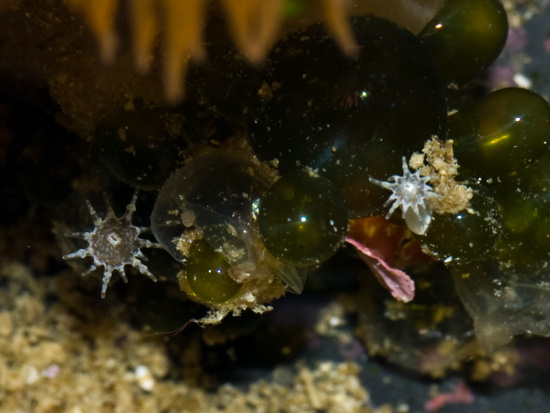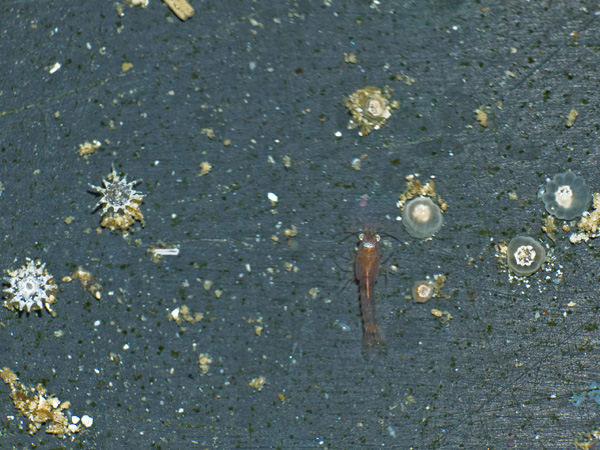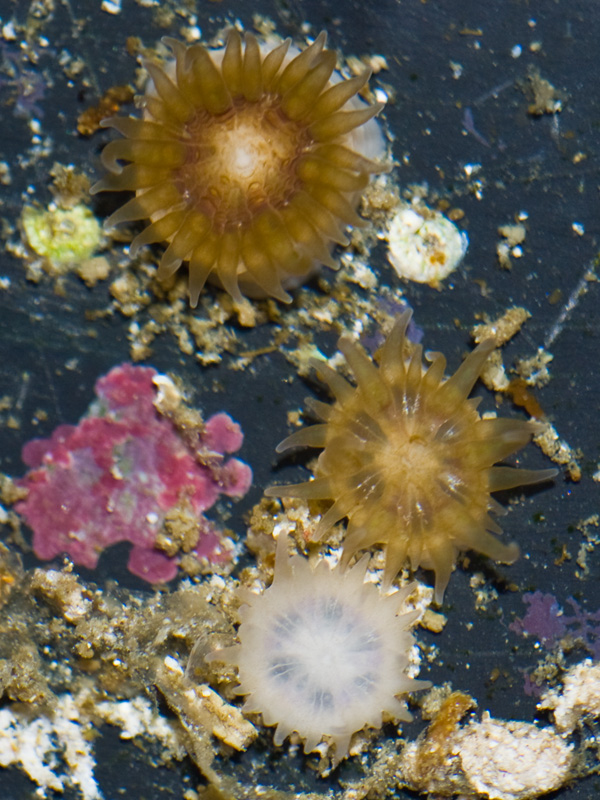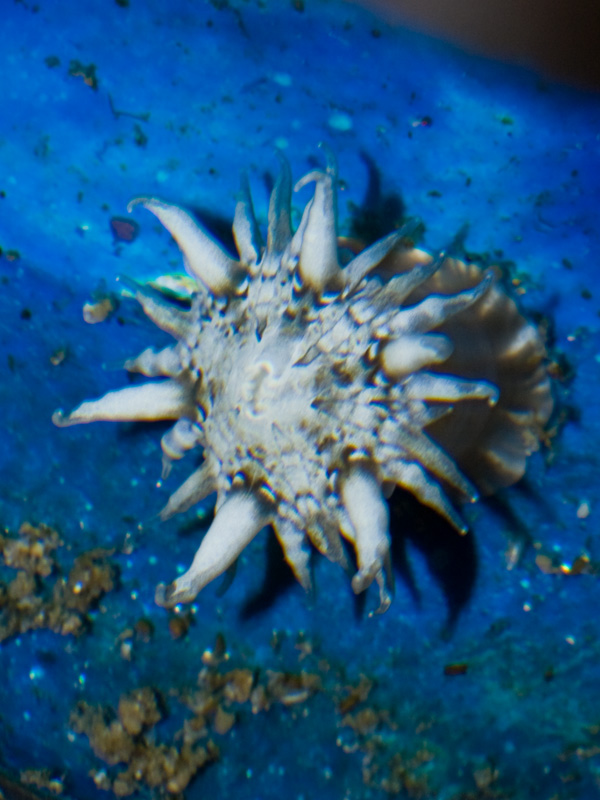Summer Solstice Birthing

Two new-born Epicystis crucifer anemones are attached to Valonia sp. bubble algae at the base of their “mother” anemone.
On the evening before the summer solstice, we noticed that several of our favorite flower anemones (Epicystis crucifer) were exhibiting classic signs of stress (gaping mouth, regurgitation, decreased turgor pressure). However, all the water parameters suggested nothing out of the ordinary, so we simply decided to leave them alone, while monitoring them closely. The following morning we began finding tiny flower anemones attached to the aquarium bottom nearest to the anemones that had appeared stressed. By this time though, the adult flower anemones had returned to their normal, healthy condition as if nothing had occurred. It was clear that the ‘stress’ that they were going through was a precursor to birthing dozens of 2mm babies from their mouths. As you can see from the photos, these babies are practically fully-formed, miniature versions of the adults.
To our knowledge, this is the first documented case of Epicystis crucifer birthing in a captive (or wild) environment. Live birth is not uncommon for many other anemone species, and given the local abundance of this species, it makes sense. It still remains unclear whether these babies were brooded internally from sexual reproduction, or whether they are asexual clones. Every little piece of information that we can gather on the life cycle of these beautiful animals is an important advance.

This tiny mysis shrimp (6-8 mm) provides a good sense of scale to the size of the new born anemones.

A tiny newborn can be seen still sitting on the oral disc of its ‘mother’, near the mouth.

The total number of babies that we’ve counted is in excess of 100, and they tend to congregate near each other, much like adults do in the wild.

These babies are now about 2 weeks old. They are about 8mm in diameter and beginning to develop their fluorescence (not easily seen due to the camera’s flash).

This is one of the largest ‘offspring at about 2 weeks. It is about 1 cm in diameter and has significant girth in its body column.
We’ll continue to update the development of these anemones over the course of the year as we do our best to raise them to adulthood. We are currently feeding them (and they are eagerly accepting) frozen rotifers, cyclopeze, and Two Little Fishes’ Phytoplan for good measure.
